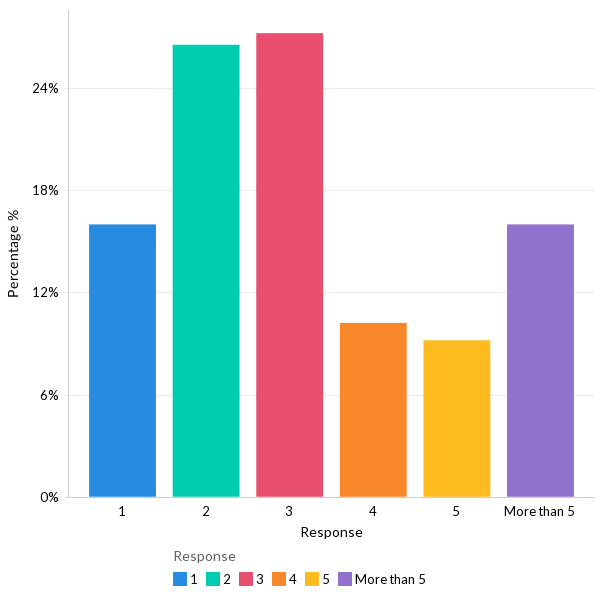Majority of the teams manage anywhere between 10-100 domains #
10-100 and less than five accounted for the majority of all respondents. Putting the number of HTML pages maintained in the thousands and also indicating the sheer effort involved in building and maintaining an online presence.
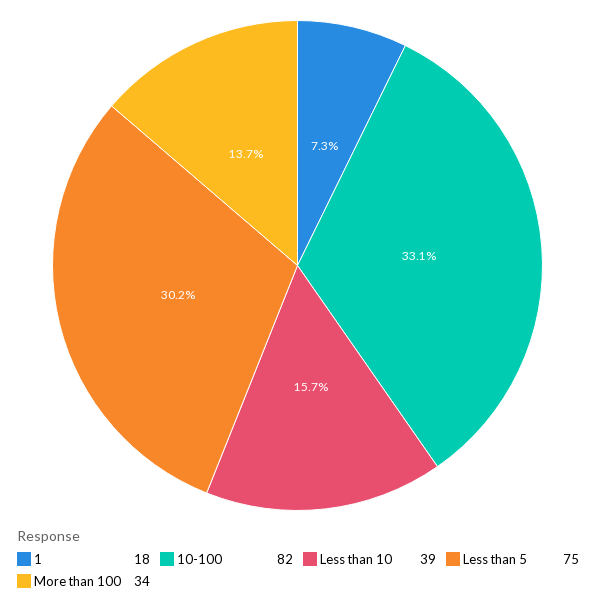

Hosting their DNS is still preferred among teams #
44% of the respondents said they run their DNS servers. Following this were popular cloud-based DNS services like Amazon Route53, CloudFlare, Azure DNS, and finally Google DNS. We also received hosting providers like GoDaddy as examples in the other category.
Slow loading pages are still the chief website issue faced #
As the individual or team member responsible for the design, implementation, and maintenance of webpages, it becomes important to understand the common issues faced by other webmaster teams to put safeguards in place. 54% of the respondents said the slow loading of web pages was the chief issue. Renewing domain names and SSL certificates (47%) and uptime issues came in second and third.
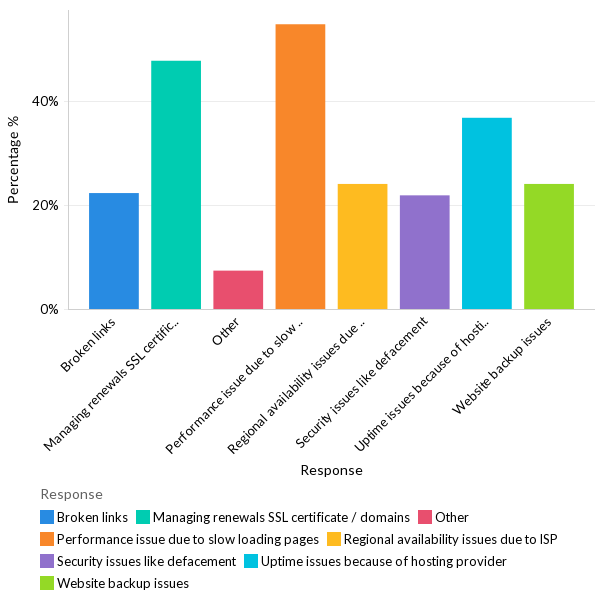
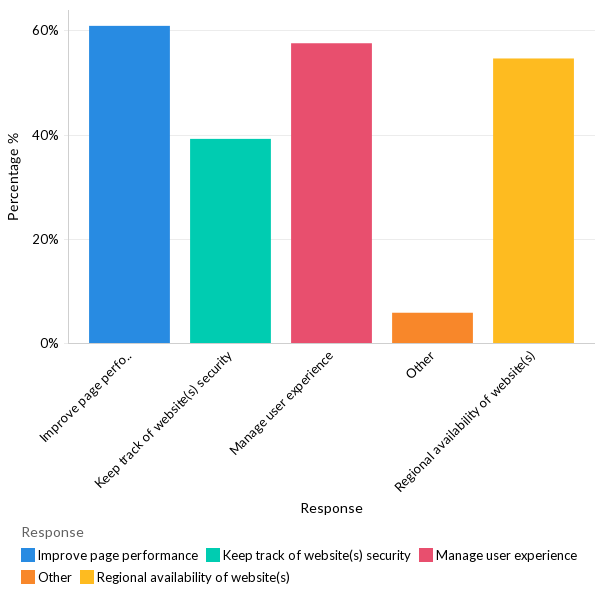
Improving page load performance tops the list of reasons people use website monitoring #
If you are still not convinced that your digital business requires a website monitoring solution. Maybe our respondents can. 61% of the respondents believe a website monitoring tool can help in improving performance. Where as 57% and 54% bat for managing user experience and monitoring regional availability respectively.
Provisioning of infrastructure in a programmatic, declarative way takes center stage #
Enterprise IT Ops is evolving. Gone are the days of provisioning and configuring infrastructure using manual, error prone processes. The results suggest that codifying the infrastructure—scripts, and leveraging infrastructure as code services is the way of the future.
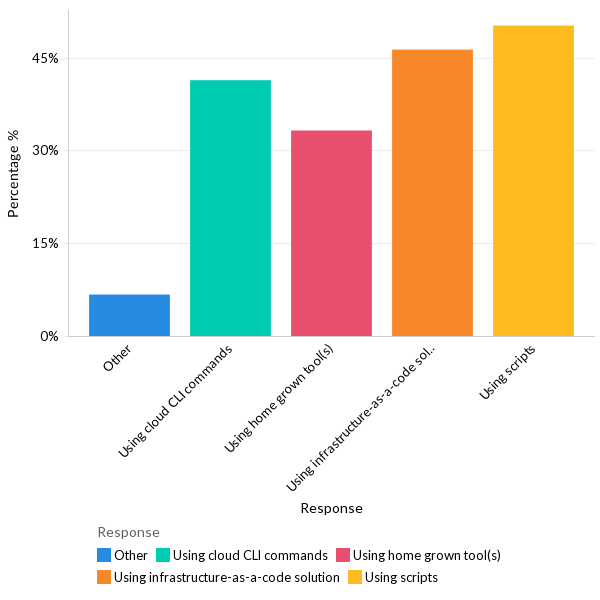
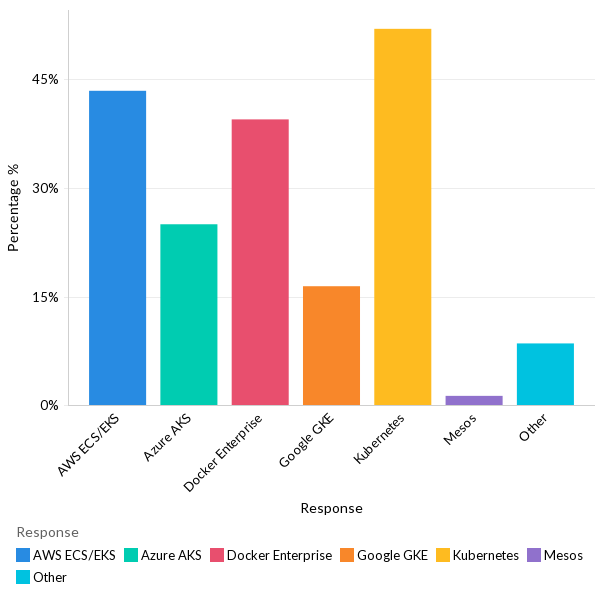
Kubernetes continues to dominate the world of containerization #
With the freedom to leverage a variety of services—from container platforms to orchestration tools—the need to choose a production-ready container technology becomes paramount. The container orchestration service Kubernetes gets the most love from our respondents. Also other services like AWS ECS/EKS and Docker Enterprise show a strong showing.
Increase in developer productivity is driving container adoption #
Let's face it, containerization is great, and container adoption is happening even faster than we imagined. But what is driving this acceleration? We asked this question to our respondents. Unsurprisingly, portability—the ability to write code and run on any cloud or platform free of issues—and the resulting improvements to developer productivity come out at number one.
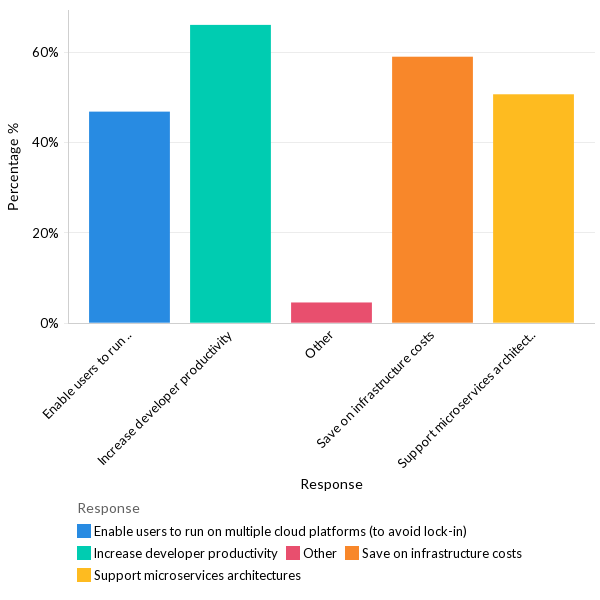

Changing operational configurations to suit containers ranks as the top challenge #
App containerization is going to pose a lot of challenges for your team. But in what way? We asked this question to our respondents. Optimizing the underlying infrastructure, container security, lack of production-ready developer tooling, and best practice operational process came back as some top responses. The results show that organizations need to evolve their IT operations practices to handle container development and deployment.
Automatically applying updates to software is the preferred way of patching #
Different operating system types, numerous approved/rejected patches, large fleets of cloud and on-premises server instances, and more have made patching servers complex. Keeping in line with this trend. Respondents reported increased adoption of third-party patch management tools with on-demand patching capabilities.

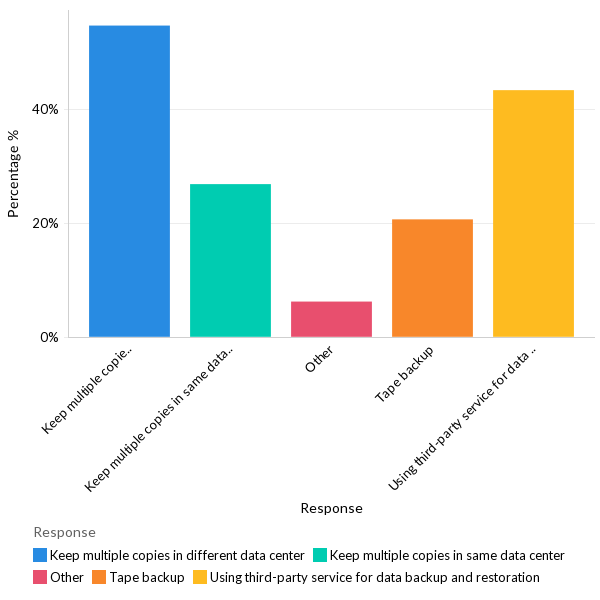
Ensuring data duplicity and reliable recovery is paramount in data backup strategies #
To understand the potential impact of data loss on businesses, we asked about data backup practices and the tools and techniques employed to ensure reliable recovery. Distributed cloud storage—duplicating data across multiple servers or data centers came out as the widely used technique. Also, server backup solutions with automated scheduling and automation were preferred over manual tools.
Git is the widely used tool in version control #
Of the respondents, more than 48% use GitHub for version control. Across regions, the results suggest that Git-based repositories are still the standard to track, maintain and collaborate on code. This data also provides some insights regarding the tools that are required to be known.

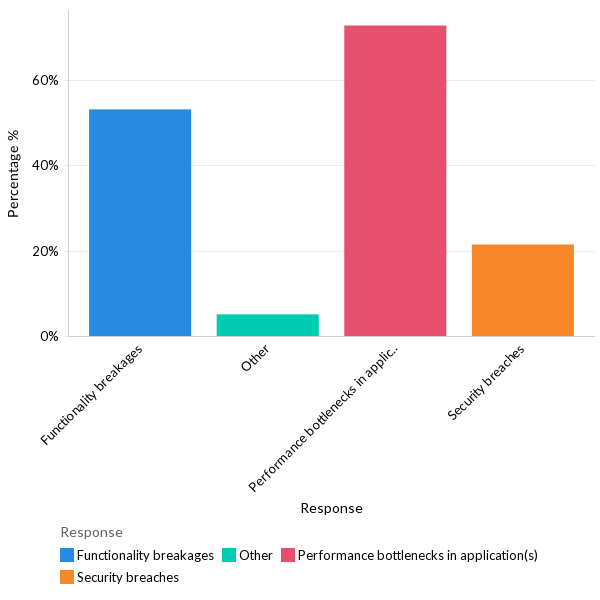
Performance bottlenecks tops the list of production issues faced #
Developing apps today has gone through a paradigm shift. So what about the issues faced in production? Have they changed as well? Surprisingly, issues like functionality breakages, and performance bottlenecks still continue to plague developers and IT ops teams even today. This implies that performance testing done by organizations still leaves a lot to be desired.
Monitoring digital end-user experience is key to ensuring app performance #
With performance directly impacting the bottom line of online businesses, developers and ops team members have started to pay much more attention to it. When asked about the measures they were using to maintain consistent performance, a majority said monitoring end-user experience is the most common approach, closely followed by addressing infrastructure bottlenecks and stress testing.
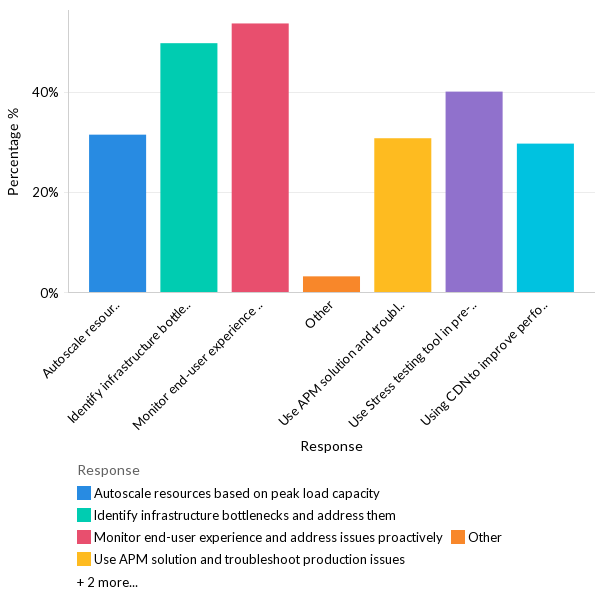
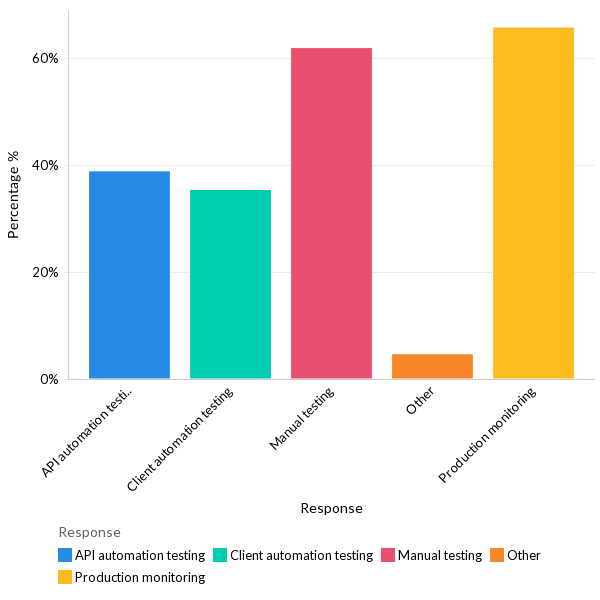
Production monitoring tops the list of methods to prevent breaking changes #
More than 65% of the respondents use production monitoring solutions, preferably APM, to detect functionality breakages. Considering the importance of monitoring for real users, this doesn't seem surprising. Also, accelerated application development, increasing the chances of breaking changes. API and client automation testing tools are also seeing significant rises.
Minimizing operational cost is the top data center management challenge #
With micro data centers, colocation facilities, and edge locations replacing traditional data centers, we wanted to understand the common issues organizations face while managing their infrastructure. Cost, real-time monitoring, and capacity planning were consistently some of the top responses we received.
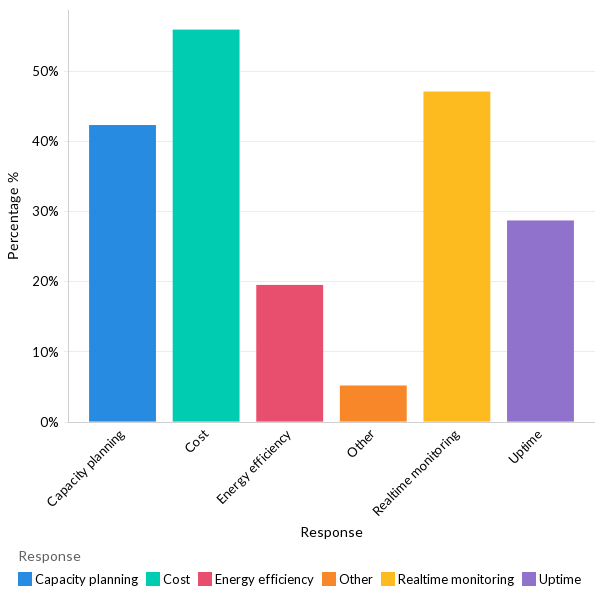

Server crash tops the list of reasons for data center outages #
Identifying the reasons for data center outages can help your team put the right design and procedures to combat them. The server crash came out at the top. While, issues in application code, database-related problems, and WAN connectivity troubles were not far behind.
ISP connectivity tops the list of reasons for WAN issues #
To understand the intricacies involved in managing a Wide Area Network, we asked our respondents about the common WAN issues they faced post setup. ISP connectivity problems, network reliability, and insufficient bandwidth topped the list of issues across all regions, indicating more core problems like poor infrastructure and oversubscription.

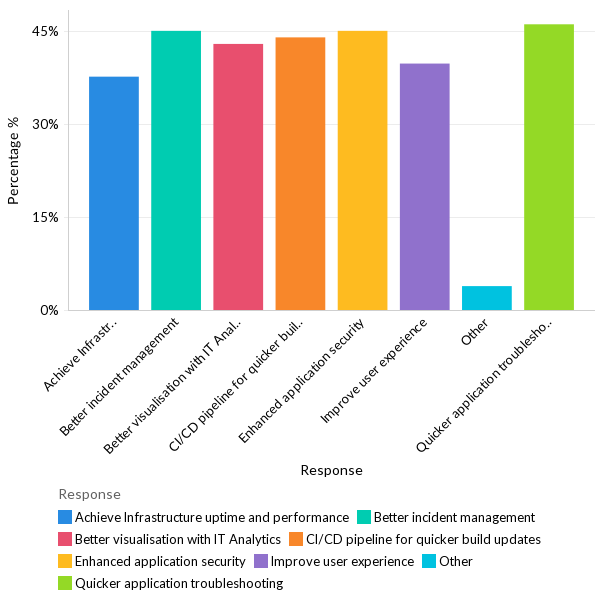
Application troubleshooting tops the list of areas that requires improvement in IT Ops #
Achieving efficiency is a continuous task. To help you move in the right direction, we asked our respondents about the various areas of improvement they have identified in their IT operations. Our findings suggest a wide area of options: Most respondents recognize the importance of DevOps practices and application security. Also, quicker application troubleshooting, ensuring uptime, and better incident management figure prominently as well.
AIOps — the future of IT ops #
A lot of IT leaders and AppDev/DevOps teams are excited about the impact AI can have on IT operations. The results show that more than 50% of the respondents think AI can help in reducing alert noise, identifying root cause, detecting anomalies and predicting outages, concurring with the overall sentiment.
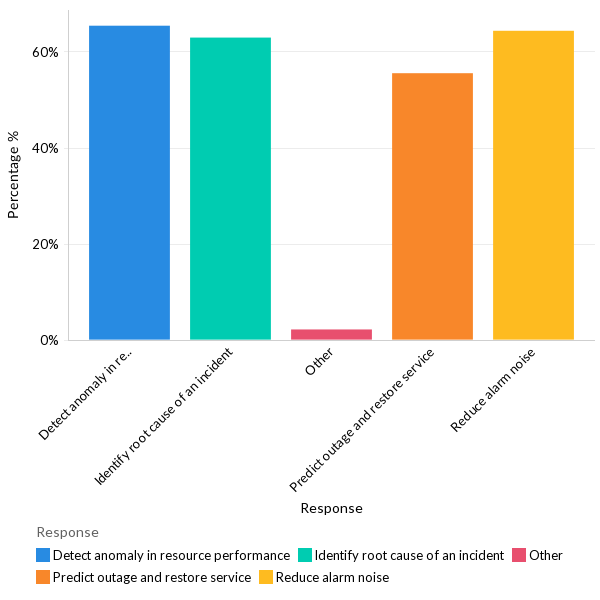
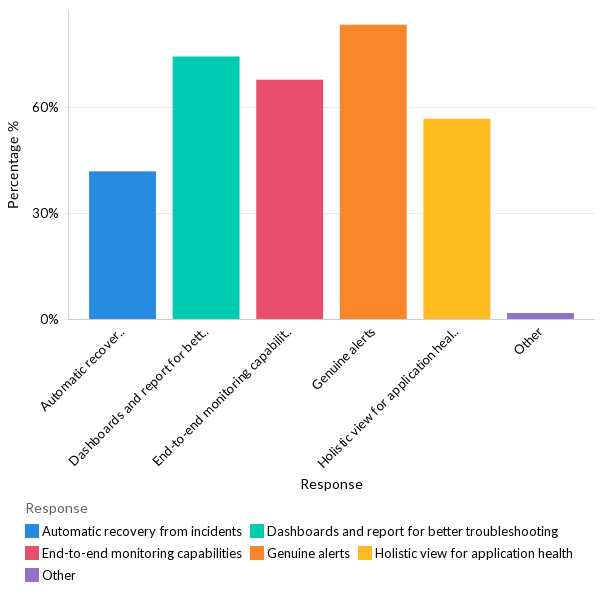
Reducing false positives is still the primary expectation of monitoring tools #
When asked about the critical capabilities expected to be in a monitoring tool. Genuine alerts, dashboards/reports for better troubleshooting, and end-to-end monitoring got the highest volume of votes from our respondents. Not getting paged in the middle of the night for a false alert, lack of highly intuitive visualization tools which could help reduce MTTR, and superior visibility across app and infra health still seem to be the chief concerns among AppDev/DevOps teams.
Majority of teams use two or three monitoring tools #
The global market of IT infrastructure monitoring tools is growing. To get a sense of how much, we asked our survey respondents how many monitoring tools they use? More than 85% of all respondents said they use more than one tool. An evolving technological landscape and the increased importance of IT infrastructure in delivering goods and services have led to a scenario where businesses are depending on multiple IT monitoring tools to get the job done.
